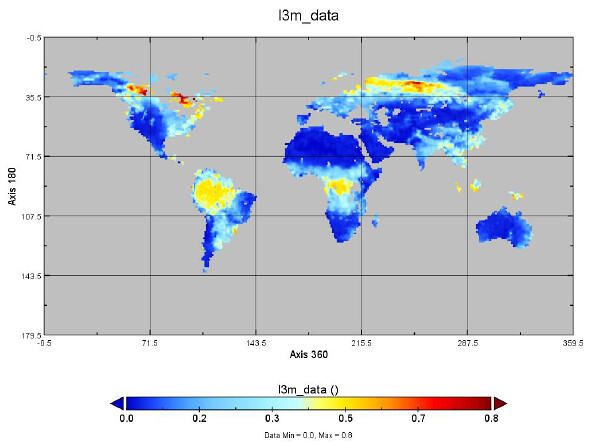
Aquarius
Overview
The NSIDC DAAC Aquarius collection includes global gridded soil moisture data and additional polar gridded products. These data products are derived from observations by the Aquarius microwave radiometers and scatterometer on the joint U.S./Argentinian Satélite de Aplicaciones Científicas (SAC-D) platform. The Aquarius/Satélite de Aplicaciones Científicas (SAC)-D mission collected observations between August 25, 2011 and June 7, 2015. On June 8, 2015, a power failure on the SAC-D spacecraft ended the mission's observations.
Aquarius employed the first ever combination of passive (radiometer) and active (radar) measurements at L-band (1 to 2 gigahertz in the radio spectrum).
The mission's primary science objective was to demonstrate accurate remote sensing of sea surface salinity. However, research teams built upon the mission’s capabilities to extract additional data including the Level-2 and Level-3 products hosted by the NSIDC DAAC.
NSIDC DAAC Aquarius soil moisture data products were produced by a NASA-funded team at the U.S. Department of Agriculture that developed a technique to derive soil moisture data from Aquarius observations. Aquarius soil moisture data have enabled scientists to:
- Monitor moisture in the top 5 centimeters (2 inches) of soil
- Refine weather forecasts, drought predictions, and climate models
- Supplement soil moisture data from NASA’s AMSR-E mission
- Fine-tune soil moisture measurements from NASA's SMAP mission
The NSIDC DAAC Aquarius collection also includes the following polar-gridded products derived from Aquarius data:
- Landscape freeze/thaw
- Brightness temperature
- Sea surface salinity of the polar oceans
- Ice fraction
- Normalized radar cross section
The Aquarius/SAC-D mission was a collaboration between NASA and the Argentinian space agency, Comisión Nacional de Actividades Espaciales (CONAE). Brazil, Canada, France, and Italy also contributed to the mission. NASA's Jet Propulsion Laboratory and Goddard Space Flight Center jointly built the instrument.
Parameters
Soil moisture, brightness temperature, freeze/thaw, ice fraction, salinity
Geographic coverage
Global
Related collection(s)
![NASA's Aquarius Sees Salty Shifts [hd video]](https://live.staticflickr.com/8380/8512918417_06c6822309_z.jpg)
